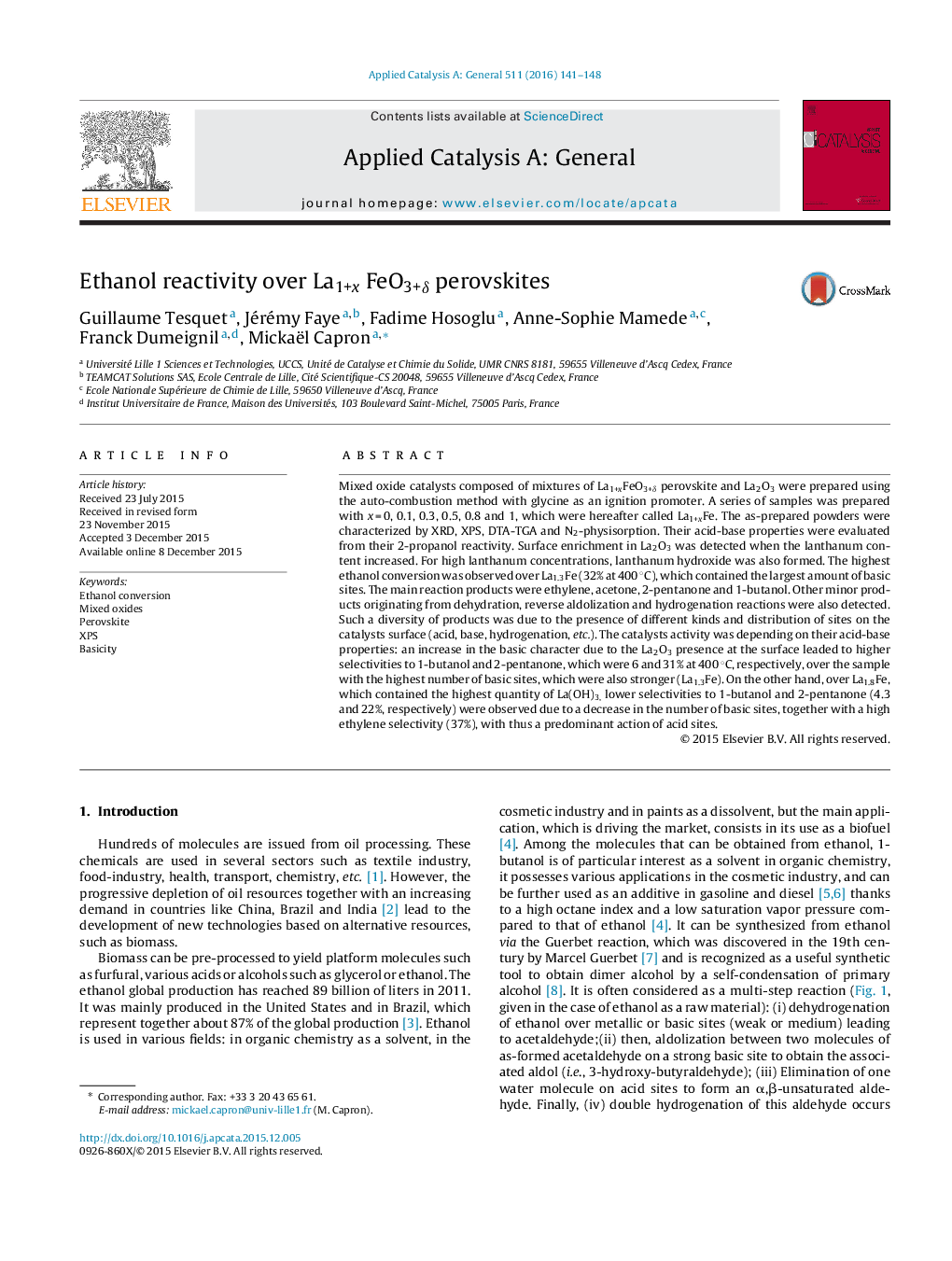| Article ID | Journal | Published Year | Pages | File Type |
|---|---|---|---|---|
| 38980 | Applied Catalysis A: General | 2016 | 8 Pages |
•Use of La1+x FeO3+δ perovskites to transform ethanol to valuable compounds and the effect of the lanthanum excess into the catalytic activity.•The ethanol conversion is directly linked to the basicity of the material provided by the La2O3 phase detected at the catalyst surface.•The La1,3FeO3+δ is the most efficient formulation to transform ethanol into n-butanol (i.e., 2%) and into 2-pentanone (12%).
Mixed oxide catalysts composed of mixtures of La1+xFeO3+δ perovskite and La2O3 were prepared using the auto-combustion method with glycine as an ignition promoter. A series of samples was prepared with x = 0, 0.1, 0.3, 0.5, 0.8 and 1, which were hereafter called La1+xFe. The as-prepared powders were characterized by XRD, XPS, DTA-TGA and N2-physisorption. Their acid-base properties were evaluated from their 2-propanol reactivity. Surface enrichment in La2O3 was detected when the lanthanum content increased. For high lanthanum concentrations, lanthanum hydroxide was also formed. The highest ethanol conversion was observed over La1.3Fe (32% at 400 °C), which contained the largest amount of basic sites. The main reaction products were ethylene, acetone, 2-pentanone and 1-butanol. Other minor products originating from dehydration, reverse aldolization and hydrogenation reactions were also detected. Such a diversity of products was due to the presence of different kinds and distribution of sites on the catalysts surface (acid, base, hydrogenation, etc.). The catalysts activity was depending on their acid-base properties: an increase in the basic character due to the La2O3 presence at the surface leaded to higher selectivities to 1-butanol and 2-pentanone, which were 6 and 31% at 400 °C, respectively, over the sample with the highest number of basic sites, which were also stronger (La1.3Fe). On the other hand, over La1.8Fe, which contained the highest quantity of La(OH)3, lower selectivities to 1-butanol and 2-pentanone (4.3 and 22%, respectively) were observed due to a decrease in the number of basic sites, together with a high ethylene selectivity (37%), with thus a predominant action of acid sites.
Graphical abstractFigure optionsDownload full-size imageDownload high-quality image (85 K)Download as PowerPoint slide
